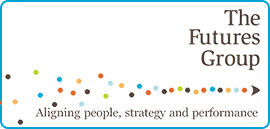Measuring Leadership: Inspiration and Accountability
Some good practical advice to learn from other organisations to apply in different contexts
Authors: Daniel Morales, Elizabeth Ledet, Lauren Rebagliati
McKinsey & Co: September 17, 2024: Summary of the new book by the authors-The Journey of Leadership
The role of people leadership is not as straightforward as it seems. Particularly in these times, where business, social, and climate disruptions are compounding one another, effective leadership requires a multidimensional perspective on two factors:
- what the organisation needs
- what individuals need (including what leaders themselves need)
Four McKinsey senior partners offer ways for today’s leaders to better understand and adapt their leadership styles. The book emphasizes an inside-out mindset, in which leaders continually reflect on and reinvent their approaches to leading others. Among the findings is the need for leaders to adopt a human-centric approach to managing others, characterised by humility, empathy, and vulnerability.
Of course, such self-awareness can only develop in a psychologically safe environment and with continual monitoring and measurement of leadership development behaviours and outcomes within an organisation.
Without a deep understanding of who is excelling as a people leader and who is struggling (and in which specific areas), it becomes nearly impossible for any organisation to design and implement meaningful interventions.
At McKinsey, we tackled this challenge head-on. In a relatively short span of time, we designed, developed, and implemented a comprehensive people leadership measurement system, which is a collection of leadership metrics that take an abstract concept and make it measurable.
This system offers individual leaders a broad set of personalised people metrics, which helps them to identify their “blind spots,” clarify their leadership strengths, and highlight areas for development. By making these metrics more transparent within peer groups, we’ve seen a powerful impact. For example, leaders often say, “I thought I was well ahead of others in this area, but I actually have more work to do.”
To develop the people leadership measurement system, several critical technology elements needed to be in place:
- A strong data foundation. A robust foundation of curated people data, developed over time and paired with a world-class analytics team driven by a passion for innovation, forms the backbone of our approach. This includes filling in data gaps, where needed, with new, innovative measures and sources, such as our Mentorship Sponsorship Survey, which invites colleagues to recognise those who have significantly contributed to their development.
- Advanced technology development capabilities. We leverage rigorous analytics to identify and prioritise key metrics, combined with the ability to rapidly design and prototype new solutions.
- Alignment with our leadership development model. We’ve developed an analytics approach that aligns with our conceptual model of people leadership, seamlessly integrating it into our organization’s development and evaluation framework.
Just as important, several critical enablers supported the people leadership measurement system, which helped to ensure its practical application and impact across the firm:
- Leadership integration: Our efforts are championed by a wide range of senior leaders, whose support and sponsorship have been pivotal—especially during critical moments, such as the heightened focus on people leadership during the COVID-19 pandemic. Their commitment has ensured that our initiatives are prioritized and fully integrated into our development and evaluation processes.
- Accountability: The use of the people leadership measurement system in measured, thoughtful ways as one part of our internal review and evaluation processes gives “teeth” to the system and signals the critical importance of people leadership in being successful at McKinsey.
- Public recognition: Finally, through highly visible communications and celebrations of top sponsors in each geography, we regularly recognize our standout people leaders who excel at supporting their colleagues.
Benefits of this approach to measuring people leadership
The impact of this collection of leadership metrics has been transformative in several key areas. First, systematically measuring leadership markers has significantly galvanised support across the organisation, highlighting the importance of focused development. Individuals now have a clearer understanding of their personal-growth areas, enhancing their capacity to lead effectively. For instance, one leader discovered a notable gap between his team’s perception of his leadership and the regional average, which fell short of his expectations. To address this, he committed to being more present and available to support his teams daily.
Second, evaluation committees have found it easier to discuss people leadership with concrete, data-driven evidence, moving away from vague or anecdotal feedback. This shift has not only reinforced the importance of the people leadership dimension alongside client service but also fostered the development of more well-rounded leaders within the firm.
Additionally, we have gained valuable insights into leadership gaps across various geographies and practices, pinpointing areas where targeted intervention and support are needed, which can be proactively addressed through development, adjustments to leadership structures, and more. For example, the leader of one of our European offices analysed aggregate sponsorship scores across all partners and found that a small group of senior leaders was providing most of the support to junior colleagues. This discovery initiated a new effort to build sponsorship skills among all leaders in her office, ensuring everyone plays a part in supporting junior colleagues.
As experience makes clear, cultivating high-impact leaders is an ongoing process that requires constant monitoring, measurement, and adaptation.
The effort is worth it, however: organisations that invest in creating a culture of psychological safety, directly address leadership behaviours, and hold leaders accountable will be better positioned to thrive. Dynamic and responsible people leadership will continue to be a cornerstone of successful and healthy organisations.



















